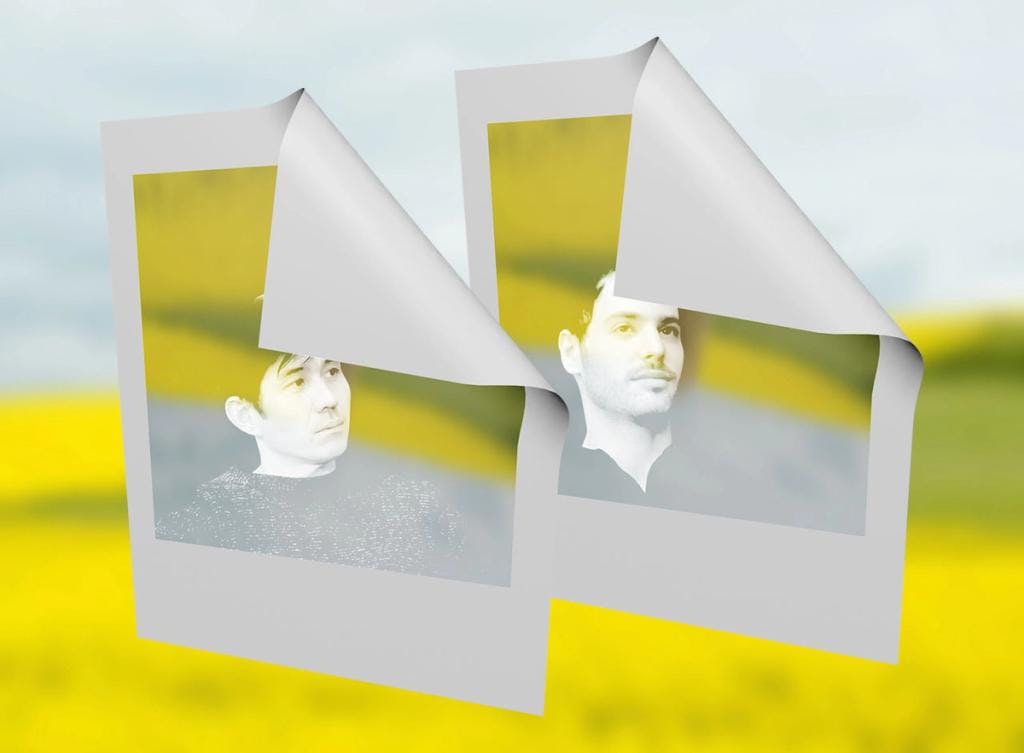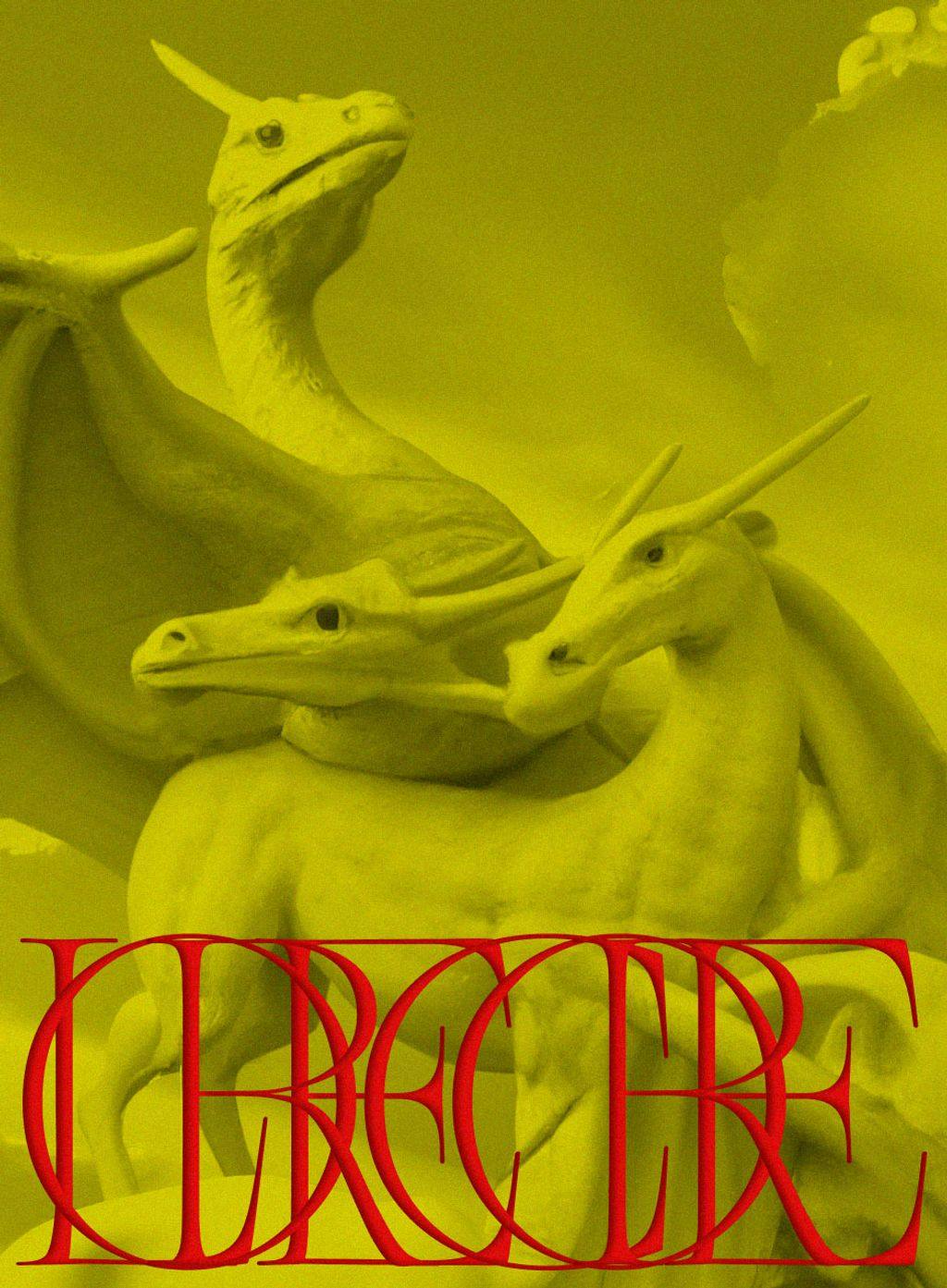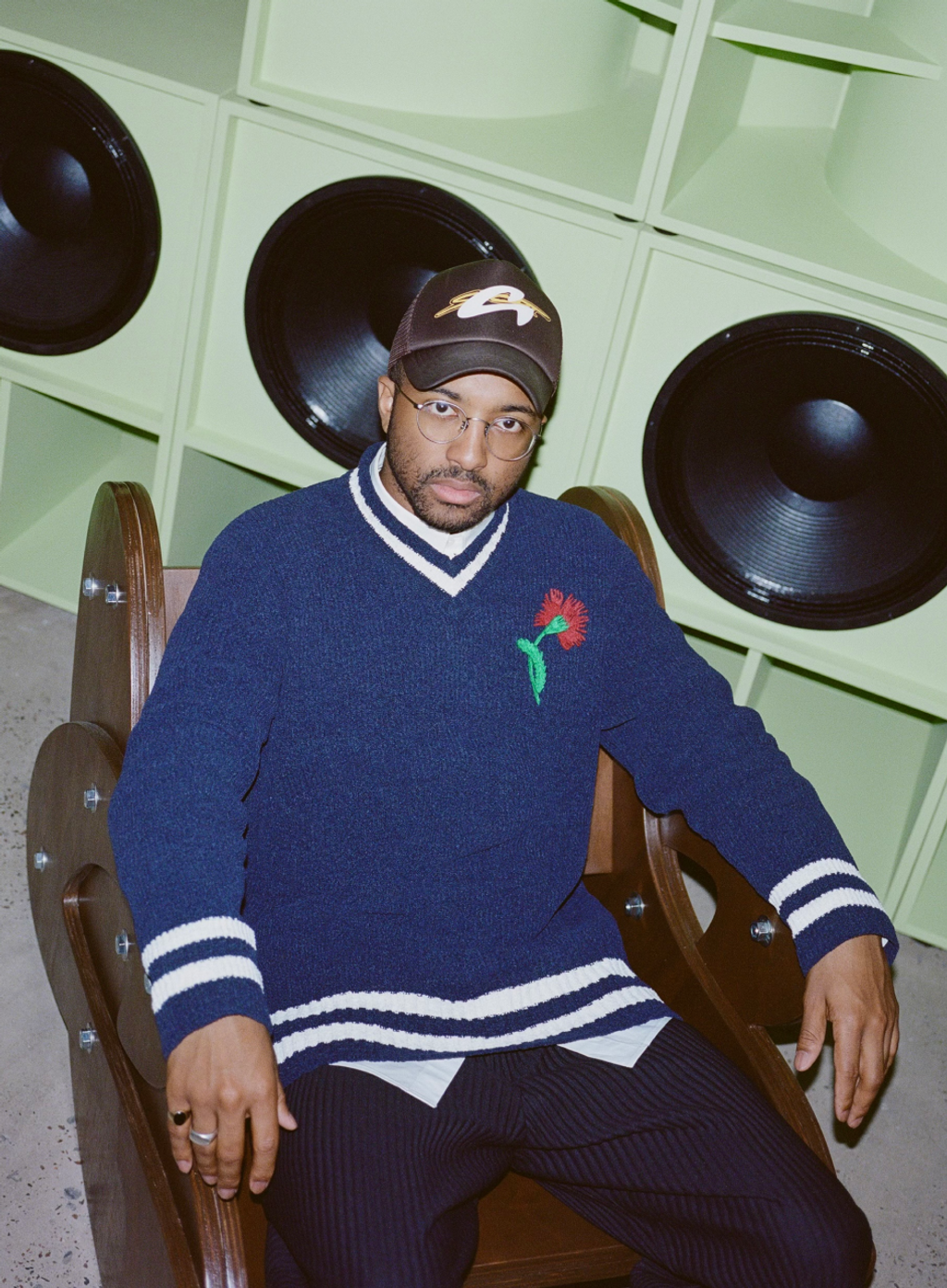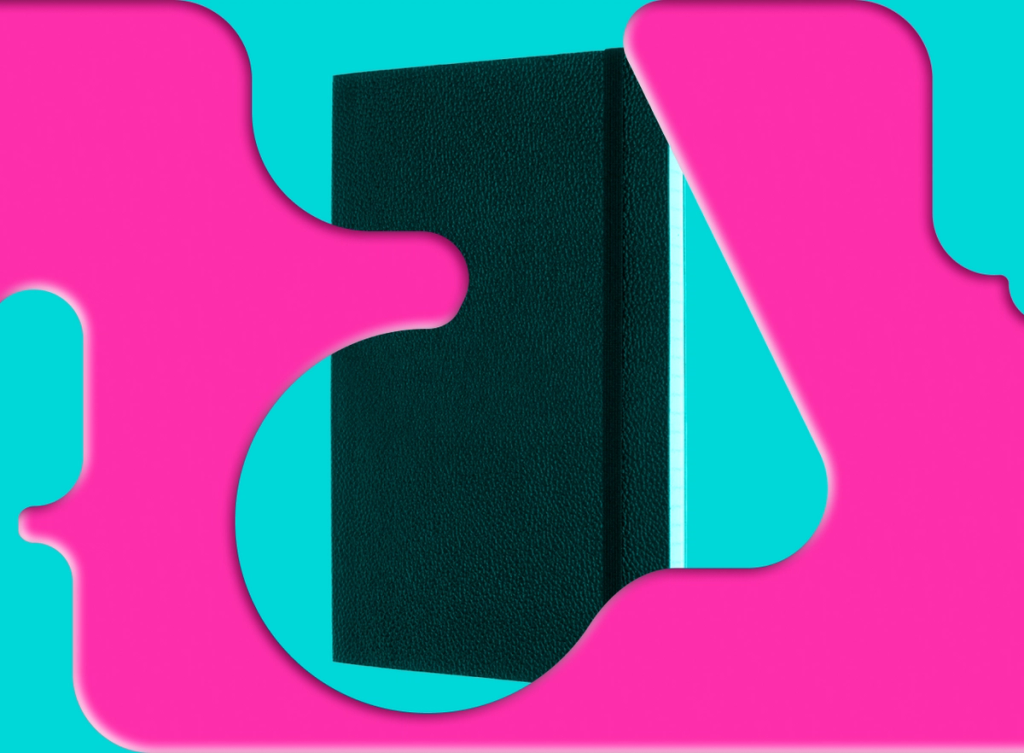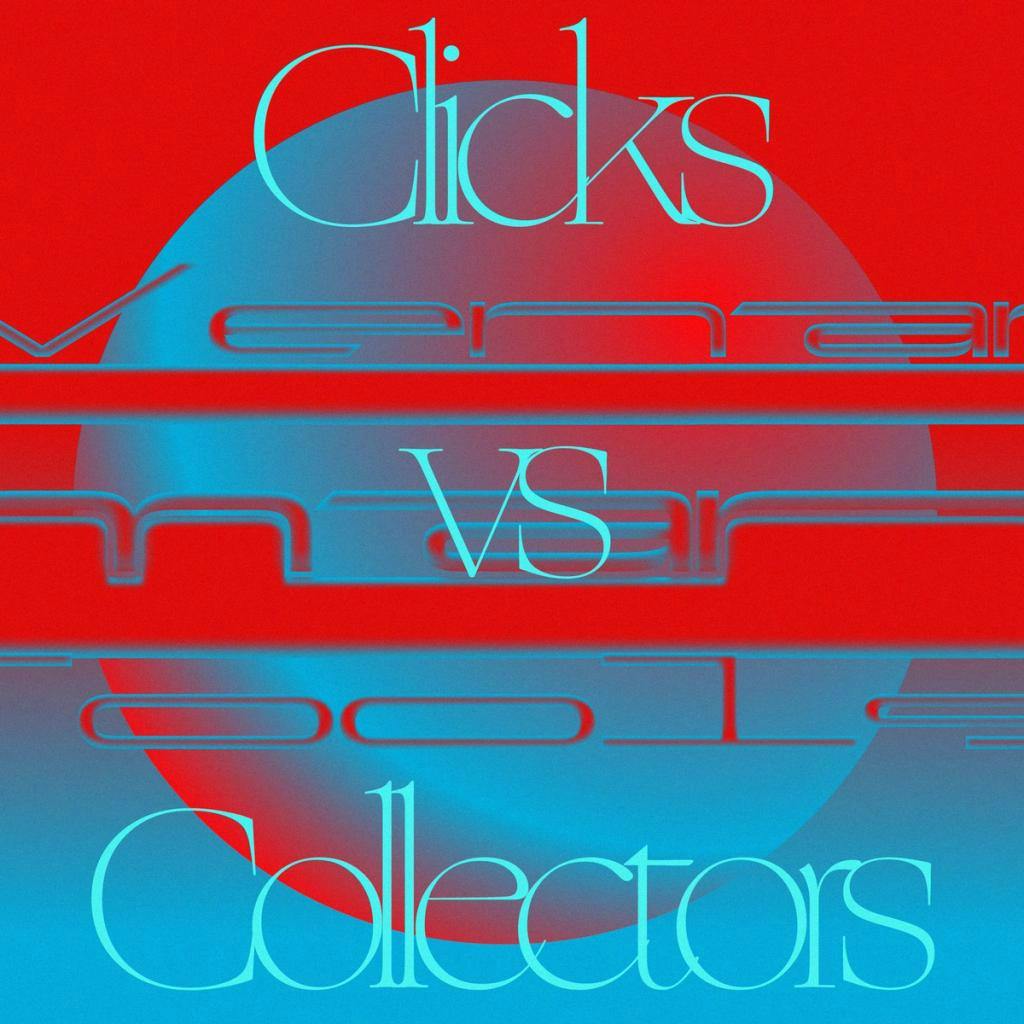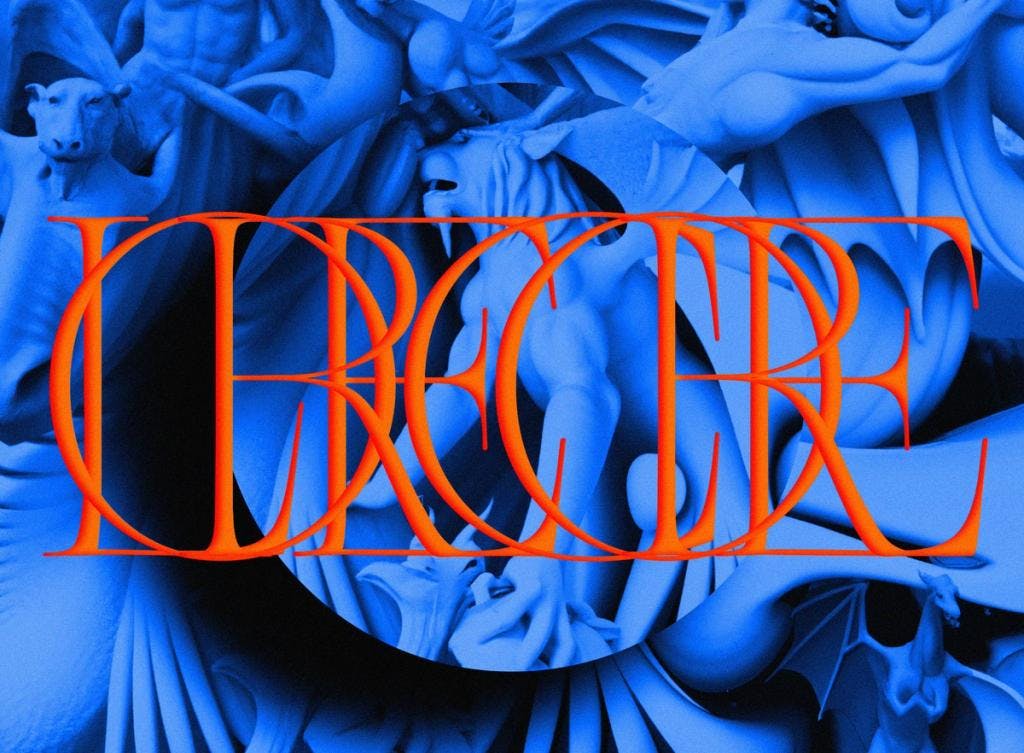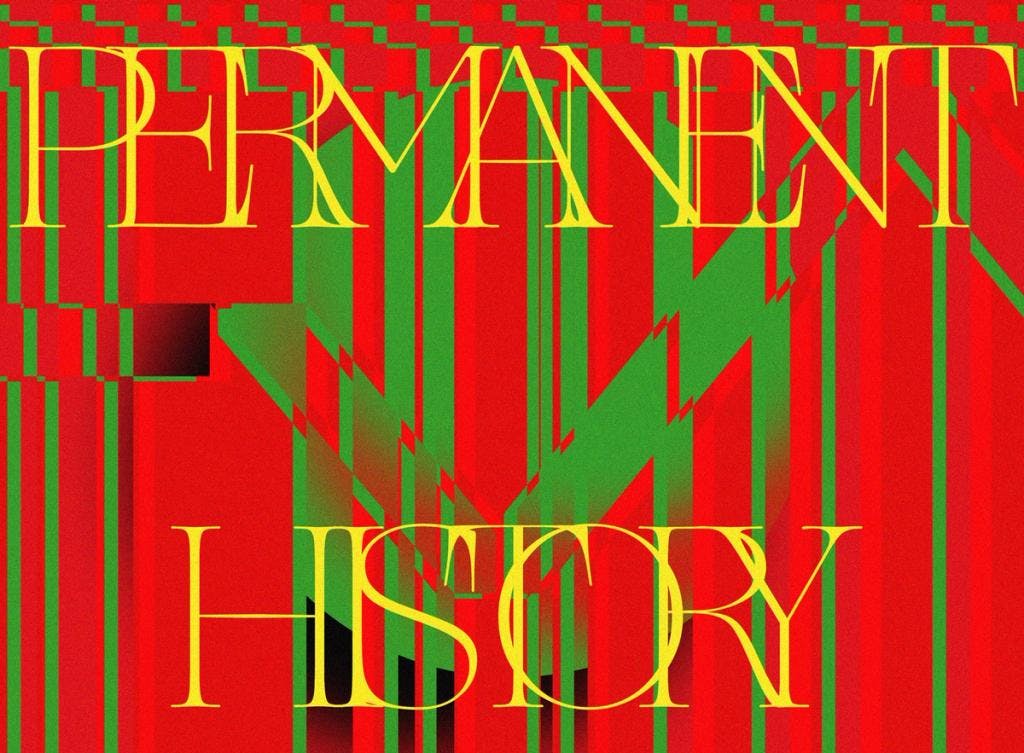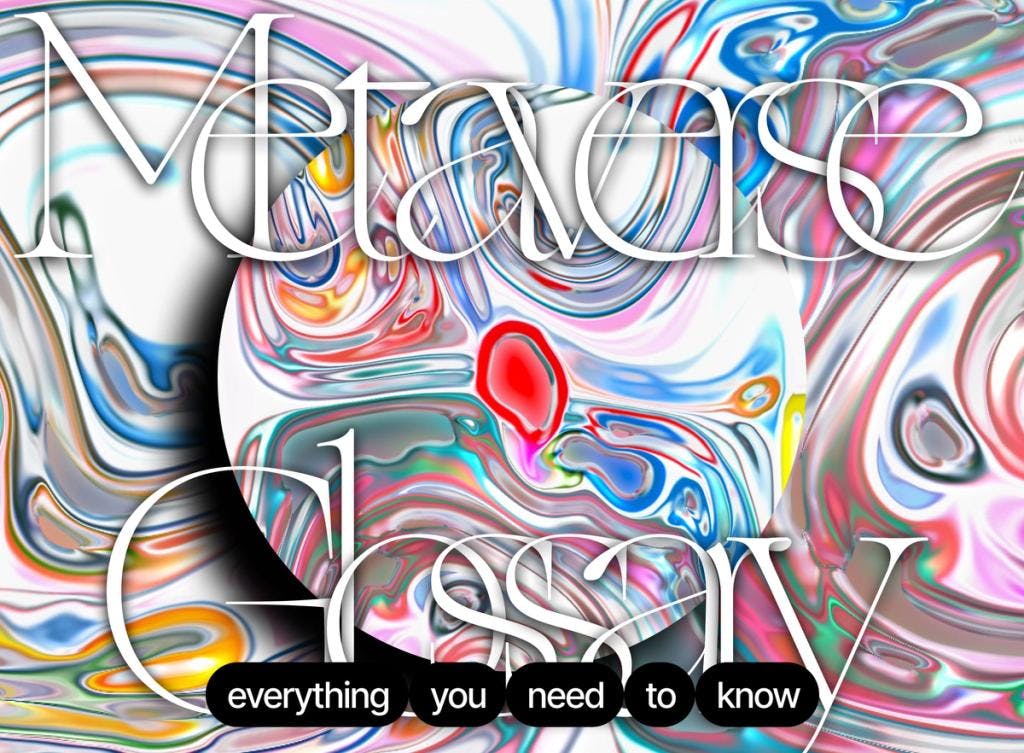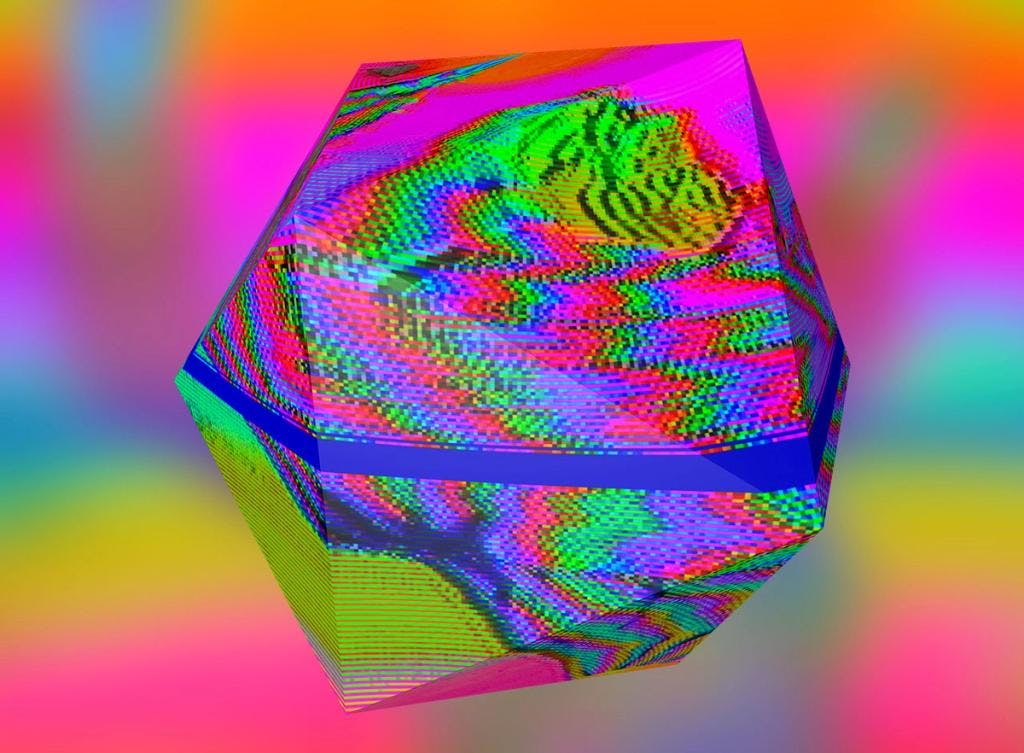


EricHuWillNotTakeWeb3ForGranted
Eric Hu Will Not Take Web3 For Granted
The "Monarchs" co-creator emphasizes building Web3 sustainably, and delineates artistic versus design approaches
For all the optimism and clarion calls to Web3’s inevitable progression, the specter of financialization and regression in the next phase of the internet will prove to be a challenge. Collaborators Eric Hu and Roy Tatum understand this, and their recent project Monarchs, the heavily lauded limited-edition series of 888 NFTs, is testament to their design backgrounds, advancement of aesthetics in the space, and a commitment to incubating and mentoring underrepresented artists making the transition into Web3.
Yana Sosnovskaya (ZORA): First of all, huge congratulations on the mind-blowing success with the collection.
Eric Hu: Thank you.
YS: How do you like your Web3 journey so far?
EH: It really feels amazing because I'm somebody that really wants to think about technology, digital media, and art on the internet. But the last decade [has] been really difficult to try to engage with the space, because a certain group of people, like Web2, has had this monopoly on the word ‘technology’. A lot of their values reflect the same thing: where it's really about hypergrowth at all costs.
It felt really alienating because Roy [Tatum] and I, we met at ArtCenter in undergraduate, and both of us loved designing and both of us loved programming. We were doing generative art and stuff as students, but after school, it felt like in order to get a job that was financially sustainable in technology, it meant that you were working at a tech start-up either in San Francisco or New York, and you were making apps. A lot of times it just didn't really capture the same values that we had. Not even just politically, where it's just all about hypergrowth and user engagement; it also meant that everything was just optimized for clicks in order to capture value. The margins just became slimmer and slimmer. Not only that, as artists, the aesthetics that were being promoted just really didn't resonate with us. Both of us got disillusioned by it and we slowly phased ourselves out. I started doing more work in the fashion industry and lifestyle—non-digital stuff.
When I started working on more traditional fashion campaigns, that technology part of me that I really liked, I felt I had to put to rest. I think, really, the Web3 journey has just been about reversing a lot and unlearning a lot of those things about fighting for a “winner-takes-all” mindset. Even that phrase, ‘We're all going to make it’, is just really beautiful. Baking in financial viability and sustainability at the core and not relinquishing it to a platform—I think that's just been really cool.
When we were working on this collection, Roy and I were saying that this is the first time in 10 years where we felt how we felt in school. I think it really clicked after I minted my first NFT with ZORA: when I visited OpenSea, I saw, ‘Hey, I already have a profile on here and it has my ZORA NFTs’. Then I was looking at other things and my ZORA NFTs were showing up on other platforms. I've made so many friends this year, and it's been really cool to just be around nerds who are excited about the future rather than cynical about it.
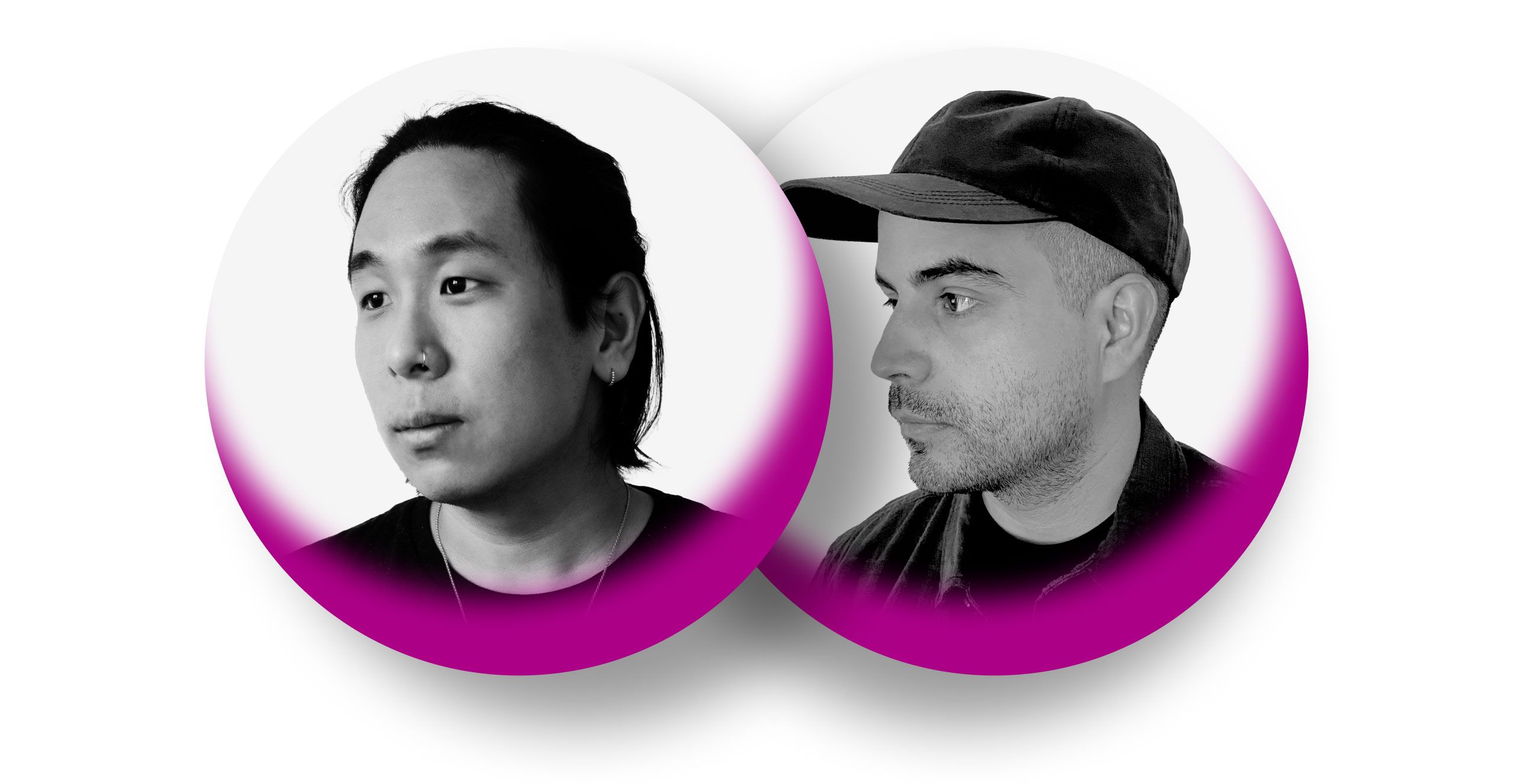
YS: With the combination of your background, expertise, experience, and also a desire for change, how do you see what's going on right now in Web3 from a design perspective? There is an opinion on Twitter that there is a long way to go for Web3 in terms of the design.
EH: I think the visual design is a lot more interesting than Web2. I think Web2, the UX is maybe nice, but everything looks really boring and the same. If you go on Solana's website, if you go on ZORA's website, they're just not afraid to just be weird. If you're a designer at a Web2 company, you have a very small sandbox because it's like, ‘Here are your goals: we're going to get this much percentage in engagement improvement’. When you're working in Web3, you're like, ‘Hey, I made this thing’, and everyone's like, ‘Cool. Let's just put it up’. It feels like everything they mythologized the Valley for being, except it's actually true this time. In terms of UX, yeah, there maybe is a long way to go, but I don't think we should do what Web2 did. I feel like the people that say Web3 has a long way to go [are] trying to project a Web2 mindset to Web3.
To them, they're like, ‘Oh, it's really hard’. Right now I think it should be hard because this is still a space where somebody sends you a DM, and [if] you click a wrong link, suddenly your entire net worth is stolen. Sometimes when you simplify things, you actually hurt people's ability to really learn about the technology and engage with it in a healthy way. Gen Z should be some of the most technologically literate groups in everything, but sometimes it feels like they're the least, because everything is so templatized, so streamlined. They don't know how to put things together in the same way that maybe people that were born a few years earlier did.
I do believe in accessibility, but I think we made too many trade-offs in the previous era of technology in the name of accessibility. We've actually disempowered people from taking control of their content and their choices. Sometimes when you make something super easy and everything, people are like, ‘Oh, this app is free’, and it's like, ‘No, this app isn't free, it just means that you're the product’.
YS: Do you think that the entry process into Web3, like setting up your wallet, will stay as it is? Or should it be simplified to some degree? Or does simplifying it prove your point on driving people and taking ownership of their ability to think and produce?
EH: When you discover a new territory, it's hard to make something new without bringing part of your old understanding of that world over. When we first made websites, they were pretty much just like magazines on the internet rather than apps, because we were really translating directly from print. When Apple made the first iPhone, it was the first touch screen and everything looked like rubber. There is the skewed morphicism [sic] that comes with it. I think Roy and I talk about this a lot, where if we try to simplify it right now, we're going to bring a lot of our old projections onto this.
I think we just need a little bit of time to think through things. This needs to be hard now because you do need that hacker mindset, you do need that tinkering mindset. It's too early to standardize—it just comes with a lot of risk. I think Foundation dealt with that, too, where in the previous iteration of their product, they were trying to hide the Web3 aspect as much as possible. But then at times, it's like, if you make it as easy as Instagram, somebody's like, ‘I'm just going to stick with Instagram.’ I think you might have to sacrifice some accessibility now, but at the same time, we shouldn't underestimate people's ability to be curious.
YS: With regards to your creative journey, do you see a difference between designers and artists? With Monarchs, do you see that as an artistic project or with a design approach?
EH: I'm not completely comfortable with the term ‘artist’ yet, but I think that comes from a societal expectation of, and this reverence of, that word. Whereas designer, I could really just speak directly to it. You can't separate design from capitalism because every fundamental thing in design that we know [is] a logo is meant to sell something, a poster is meant to announce something. Design rarely just gets to just be its own thing. It's always referencing something else or it's always in service to something else, but I don't think it's going to be like that forever.
Roy and I went to ArtCenter in LA, and it's a design college: instead of painting, you had illustration—even though painting is an artistic medium and there's illustrators who paint—it was geared towards a practical use of painting; instead of sculpture, you had product design, or industrial design, or furniture design. I think all artistic mediums start off in that practical phase, where painting was in service of the Catholic church for hundreds of years. [With] painting, you had a client: if you're Michelangelo, and you're painting the Sistine Chapel, that's more of a piece of design than it is art—for a while.
I think the lines between art and design will be blurred, where maybe we can make art [with] graphic design as the medium, just like you can make art with painting as the medium.
Then over time, people just started enjoying painting for itself. I think graphic design is going to go in that route. As these tools become more democratized, all of these applied arts end up becoming just artistic expressions of themselves. I think the lines between art and design will be blurred, where maybe we can make art [with] graphic design as the medium, just like you can make art with painting as the medium. I think by then we'll have a new word for it. NFTs have maybe accelerated that with graphic design in many ways, where that design could just be enjoyed on its own terms.
YS: How did it feel for you with Monarchs to not have a client?
EH: It's crazy, because I've made works where I didn't have a client, but I haven't done it in a long time and I've never gotten paid for it. There wasn't really anybody else to impress except just me and Roy; that's why I said that we felt like we were kids again. It’s like, we've made keynote decks for companies that have helped them raise millions of dollars—what we do is valuable. Somebody could start a direct-to-consumer suitcase brand and get investment and capital just based on a cool-looking poor PDF file they make. We've always captured that value—it just didn't go to us.
That's literally what design felt like: we're going to help another company become richer; I'm going to make a living by helping other people become rich. I don't want to say we're going to help ourselves become rich, but it's more like there was just a one-to-one relationship between the labor we were putting towards and then the value going directly to us. That was really surreal, it's uncomfortable. It feels wrong, even, because we're so used to having it the other way around. You almost feel guilty for that much, but then I just try to tell myself, ‘We've done this for other people, maybe it’s okay that we do this for ourselves this time’.
YS: You touched on a very interesting topic: this shifted paradigm of ownership. Whenever people try to explain NFTs to someone for the first time, the first thing is explaining how they actually change the idea of ownership. Do you understand this new type of ownership, do you collect and support artists? What does it mean for you?
EH: NFTs have just made it easier to support things. I love the idea of this new ownership economy. It's been really cool seeing companies issue tokens to people that use their products more. I think crypto...is an amplifier: if you're a libertarian asshole, it's going to help you become an even more libertarian, more asshole-y person. But if you believe that the people that help you out should be taken care of, and that we can have a place where we could take care of our friends, and our friends can take care of us, and it's not about fighting over scraps and the narcissism of small differences, we can take part.
I'd love to have the NFT collective with friends, where if somebody makes a piece, a percentage goes to everybody in the collective, so that if somebody is going through a tough time, they're taken care of in some way by everyone else. That's what I'm really excited about: profit-sharing and revenues. I think smart contracts are where I really try to explain that to people: you don't have to wait for a monthly check, this is something that could just happen at the moment, because it's something that's executed automatically. Even a lot of my friends who paid for NFTs and are skeptical of it—I don't know anyone that's really skeptical of a DAO. Even the ones that hate NFTs, they're pretty interested and curious about what a DAO can do. I think in the long run, I wouldn't be surprised if the idea of DAOs is what really gets people into Web3 more than NFTs.
YS: How different do you think DAOs are from the existing concept of co-ops?
EH: I don't think they're that different, I just think that they make it easier to start co-ops. Co-ops, because of the way they're set up, still really depend on the altruism of people, you just accept that it's not going to be able to scale—there's so much of that human element that gets in that way. It's hard to imagine a 10,000-person co-op and having that make sense.
YS: Yes.
EH: [A DAO] could grow big and could take on a big ass company. The idea of a co-op facing up against a giant is very David and Goliath, where now it's like some DAOs are worth more than several tech start-ups. It doesn't have to be different from a co-op. I always tell people: you can just call it a co-op if it helps. Some people prefer the term DISCO: Distributed Cooperative Organization, instead of Decentralized Autonomous Organization. Whatever helps people understand it.
YS: What do you think is the biggest challenge at the moment in Web3 for creators and artists, specifically?
EH: The people that would bring the most value to this space right now are not in this space yet. And there's a lot of reasons why: there's financial exclusion; then there's technical exclusion, where it's too complicated right now; there's also artistic exclusion; there’s also genre exclusion where it's like, ‘Oh, I don't make 3D artwork and I don't make cute animal profile pictures’. I think a lot of NFT art gets a bad rep because, well, they just see the ones that make headlines, and the ones that make headlines are ultra-millions of dollars and are dumb-as-shit looking. They see the pieces that make the most value and seem to have the least-discernible artistic merit.
Then another thing is—I call it techno-ontology—where Web2 has this monopoly on the word ‘innovation’ and the future right now, and that future never came. In fact, the future that they promise is worse: Mark Zuckerberg wanted to connect the world, and he just ended up destroying American democracy. With Web2, we've learned that if some people are going to get rich, it means a lot of people are going to get screwed over: people are having really spirited arguments and it's just raising Twitter share prices. The legacy of Web2 is still there and it's haunting.
But Roy and I believe that all it takes is one project to change the space: CryptoKitties birthed 1,000 different NFT projects; Loot created a bunch of other ‘Loots’. What was really crazy about Monarchs is that we just got a lot of people that were like, ‘Hey, I wasn't really interested in NFTs, but this looks very different from the things I've seen’. That's why we want to do Decentralized Beauty: we're trying to use some of the funds to incubate and maybe mentor underrepresented artists to Web3. We're trying to make this platform more accessible to people that have been marginalized and excluded—whether financially, culturally, racially—because they don't see themselves represented. There's this whole history of NFTs that doesn’t really get talked about: one of the first NFT artists is a trans woman, Rhea Meyers; some of the biggest Web3 platforms, like ZORA and FWB, have Black co-founders.
YS: Looking at the results and history of Web2, do you have any feelings, predictions, or an understanding of what kind of challenges Web3 can face? What should we be cautious about?
EH: Web2 wasn't always bad before. At one point, the energy in Web2 was just a bunch of people who didn't fit in, trying to make something that was different from what came before them. Then sooner or later, the management consultants came in, the MBAs came in, the VC money came in, and things just got lost. I think when people are like, ‘Oh, Web3 is going to liberate people’, I get really angry. I’m like, ‘Dude, when you say that, it just makes us all more lazy; we just expect that Web3 is going to be inherently better than Web2’.
No, this is a conscious choice. We have to make protocols that aren't trying to be extractive—all of that takes effort. I have full faith in Web3's ability to do some amazing things, but I also have full faith in humanity's tendency to just become selfish once it gets to a certain point. Web3 has a lot of promises it can offer, but it's not going to happen automatically. Now that you hear Facebook is building a metaverse, we've got to work faster. We're in that childlike phase right now where everything's curious: we're going to soon hit an adolescent phase where we're going to have to make some tough decisions because we're going to have more users in the space; we're going to have more opportunities to make money. That's usually where some of our worst tendencies come out. It's also what's going to happen during a bear market that lasts more than two years.
Can we sustain it? Can we keep building? Soon, we're going to get to a moment where it's a test of our values—we might be shocked. Some things that start off very altruistically as a public good may pivot and become a for-profit thing, just like Web2. We can't be surprised by that. In fact, we should expect that. The problem is, when you make everything open source, you're going to have people that have resources and powers to exploit that open-source free thing. We have to think about money from the start. Otherwise, this is dead in the water. If we don't figure that out, then the thing that's going to make more money—whether selfish or not—is going to be the thing that succeeds.
We're trained to just think, ‘Okay, the best way to protest something is to not engage in it’, but no, that's not true a lot of times: sometimes you just have to put up with it because you have to deal with it; sometimes you have to stop violence with violence, in a way; sometimes you have to fight capitalism with a shit ton of money; sometimes you have to fight some of our worst tendencies in people by incentivizing things that resemble these things, but ultimately lead to a more equitable landscape.
YS: The basic problems of society can remain in Web3; there is the same problem of polarization and there are still quite a lot of people with a very different set of values that also have access to capital, meaning they have access to power and influence.
EH: That's why I think Web3 is not inherently better. Web3 right now is better because there's enough people who want to be better than the people in Web2. That's all it is. The moment those people leave, the moment those people change, the moment there's more bad actors than good actors, it's going to be exactly like Web2, but probably even more dystopian. We have to fight for it. There's evil people in Web3 right now.
That's where you might have to make certain decisions: do you optimize for yourself, or do you optimize for many people? I'm a human being, too. I'm not saying I'm immune to these things. I'm not making a value judgment, but I'm just saying we're going to have to deal with that sooner than we think. They're like, ‘Oh, Web3 can be bad’, and I'm like, ‘Exactly. It can be bad, but guess what? We're early enough that if you're good, it makes a difference’. Everyone's like, ‘Is it too late to be in NFTs right now’? If you joined the NFT space today, you are in the earliest 10% of users. 90% of the people that are going to bring the most value to this space are not here yet.
It would take a lot of good people to change Web2. It would take fewer good people to change Web3 and keep it good. Let's cut our losses. Let's just try to be in here and engage in that space—even artistically, aesthetically, [and] politically.
YS: What's next for you on your journey?
EH: I think Roy and I helped ourselves and [now] we just want to try to help other people, but at the same time, we're not trying to do a GoFundMe thing—we want to make sure it's sustainable. We want to make sure that we're taken care of, too, because I think that's another thing with Web2, is the GoFundMe situation where it's like, ‘Oh, in order to be good, you have to suffer’. That's really what the Web2 thing is: ‘If you're so kind, why don't you give all your money to this? If you're so good, why don't you say no to any of these things’?
That doesn't last and that's just not realistic. If it meant we had to sacrifice too much, all it shows is that in order to be a decent person, you can't be happy and you have to eat shit. But it's like, no, we actually have a better chance of affecting other people if we show that we can both take care of ourselves and take care of other people. Then that can inspire more people to do the same thing.
How do you scale something that benefits a lot of people instead of a few? How do we reclaim growth? Because [with] Web2, when you scale, it's like you're making a shittier thing, but for Web3, it'd be amazing if we could reclaim what it means to scale. I think what's next for us is we want to keep making more projects, but also, we want to help onboard people into this space. That's what we're trying to figure out what to do with a portion of that money right now: we're starting to reach out to our network of artists and saying, ‘Hey, we love your work. Have you considered doing NFT? But not just any NFT. Do you know what a smart contract is? Can we talk to you about that? Can we talk to you about how to make generative art’? We're just trying to reach out to people like that and take it from there.
YS: Which people or projects—ideologically or aesthetically—inspire you in Web3?
EH: I would say ideologically, definitely Orca Protocol. Julia Rosenberg and her co-founder, they're really smart people. It's hard to do anything creative with a DAO because the model that people know is token voting. People could buy tokens and run things, but Orca Protocol separates people into these pods, people can make creative decisions, and it offers an alternative to token voting that's really amazing. I think the Mina protocol is amazing, where it's a blockchain, but it's only ever going to be 22 kilobytes because instead of a chain of data, the previous block is just a snapshot of every block that came before it. Instead of trying to get a whole elephant, you just have a postcard of an elephant, and that's really cool.
In terms of Web3 aesthetics, design-wise, a lot of it's better than Web2. ZORA ZINE is much more interesting-looking than most of the web projects, but I think aesthetically we could keep pushing it further. I think I like how objkt feels. I like how Hic et Nunc feels, but I think that's where I'm just like, ‘Yeah, we could go somewhere’. I think we could make it.
Note: This interview has been edited for length and clarity.


